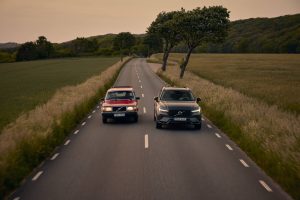
The XC60 overtakes the 240, becoming Volvo’s best-selling model. Photo courtesy Volvo.
With more than 2.7 million cars sold, the Volvo XC60 has surpassed the iconic Volvo 240 as the best-selling Volvo model ever.
Since its debut in 2008, Volvo Cars’ mid-size SUV has remained a favourite among customers, appealing to many drivers who value safety, quality and a premium driving experience.
Initially built exclusively in Europe, the XC60 became the first global Volvo model to be produced in China, supporting local sales.
In 2018, it was named World Car of the Year.
The current generation XC60 introduced plug-in hybrid drivetrains to a broader audience, and it was the best-selling plug-in hybrid in Europe last year.
For the 2026 model year, the XC60 has undergone a significant refresh with a modernized design, more intuitive user experience, improved comfort, and a more responsive infotainment system.
Family car
The XC60 is considered the ideal all-rounder for families, combining cutting-edge safety features, Scandinavian design and SUV practicality into one package. It has earned its position as a cornerstone in Volvo Cars’ tradition of building cars that families trust.
For years, the Volvo 240 estate was the most popular choice for families worldwide, and it was loved for its safety qualities and driving characteristics. In many people’s eyes, defining what an estate car should be.
The SUV has replaced the estate as the family pick, and the XC60’s new status as Volvo Cars’ best-selling model of all time reflects this shift in customers’ needs and wants.
Many who grew up with the Volvo 240 are now choosing the XC60 for their families. And just like the 240 helped shape their childhoods, today’s XC60 creates memories for a new generation.
Two cars, one safety heritage
When the Volvo 240 was introduced in 1974, it set safety benchmarks that would remain relevant for decades. For its time, it featured an advanced body design with front and rear crumple zones and a reinforced passenger compartment. This kind of safety cage protects Volvo occupants on the road today.
The 240 was among the first cars to incorporate enhanced side-impact protection, which evolved into Volvo’s patented Side-Impact Protection System (SIPS). Additionally, introducing the Child Booster Cushion in 1978 marked a world-first innovation.
The Volvo XC60 has continued introducing numerous advanced safety technologies, such as City Safety—the world’s first standard low-speed automatic emergency braking system designed to help avoid or mitigate a collision at speeds up to 30 km/h. Launched in 2008, this feature has become commonplace on new cars worldwide.
In another world-first, the XC60 introduced Oncoming Lane Mitigation in 2017 with a system capable of steering you back into your lane if you drift into oncoming traffic. These innovations have earned the car several independent safety awards.
Just as the 240 was at the time, the refreshed Volvo XC60 is one of the safest cars on the road. Its advanced safety cage and the latest active safety and driver support tech are designed to help protect drivers and passengers.
Bridging the gap to a fully electric future
The refreshed XC60 and other recent upgrades across the lineup also play a key role in Volvo Cars’ electrification strategy, offering pure electric driving and the reassurance of a combustion engine for those not quite ready to go fully electric. Volvo Cars’ data shows that around half of the distance covered by its plug-in hybrid cars globally is powered purely by electricity.
From 240 to XC60
- The Volvo 240 was produced between 1974 and 1993, and 2,685,171 cars were built.
- The 240 was made in Gothenburg and Kalmar, Sweden; and Ghent, Belgium.
- The final Volvo 240 rolled off the line at the Torslanda plant in Gothenburg on May 5, 1993.
- The XC60 is now produced at Volvo plants in Torslanda and Chengdu, China.
